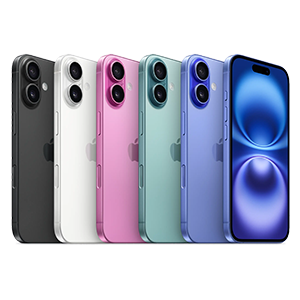Basing his analysis on slipping ship times from Apple's ordering web page, analyst Ming-Chi Kuo believes that Apple is seeing lower demand for the high-end iPhone 16 models and higher sales for the regular iPhone 16, along with the iPhone 16 Plus.
The iPhone 16 and iPhone 16 Plus appear to be the top sellers for the debut weekend.
While these claims are only based on initial demand, Kuo claims Apple sold around 37 million units on the new iPhone's first weekend. He says that this is down 12.7 percent from the iPhone 15 lineup debut.
The iPhone 16 Plus, which starts at $899, is up 48 percent over the iPhone 15 Plus from last year, despite the entire new lineup retaining the same price points. The regular iPhone 16's initial sales are up 10 percent over the iPhone 15's debut weekend.
Meanwhile, the iPhone 16 Pro at a base price of $999 is down 27 percent compared to last year, while the Pro Max -- which starts at $1199 -- is down 16 percent, according to Kuo's compare. One factor that may be weighing into the debut ordering equation is the fact that all models will be getting the much-hyped Apple Intelligence features as they roll out over the next few months.
iPhone 16 first weekend pre-order analysis: estimated total sales of about 37 million units; Pro series demand lower than expectedhttps://t.co/GGAN9Yewx3
-- (Ming-Chi Kuo) (@mingchikuo) September 15, 2024
The fact that one of the marquee features of iOS 18 will not be shipping with the new units but will roll out in stages over the remainder of 2024 and early 2025 may also be a factor. That said, the strong enthusiasm for the Plus model, along with the smaller reduction in the Pro Max's sales, shows that many early adopters still do prefer the larger-sized iPhones.
Kuo believes that Apple approximately doubled production on the initial iPhone 16 Pro Max model compared to the iPhone 15 Pro Max, preparing some six million units ahead of the debut. Apple tends not to discuss exact sales figures, and it is too early to tell if demand will continue in the current pattern, or change as the new iPhones become available in stores.
The upcoming holiday season is likely to play a big role in early demand for all of the new iPhone models. The mix of top sellers typically change by the end of Apple's fiscal first quarter.
